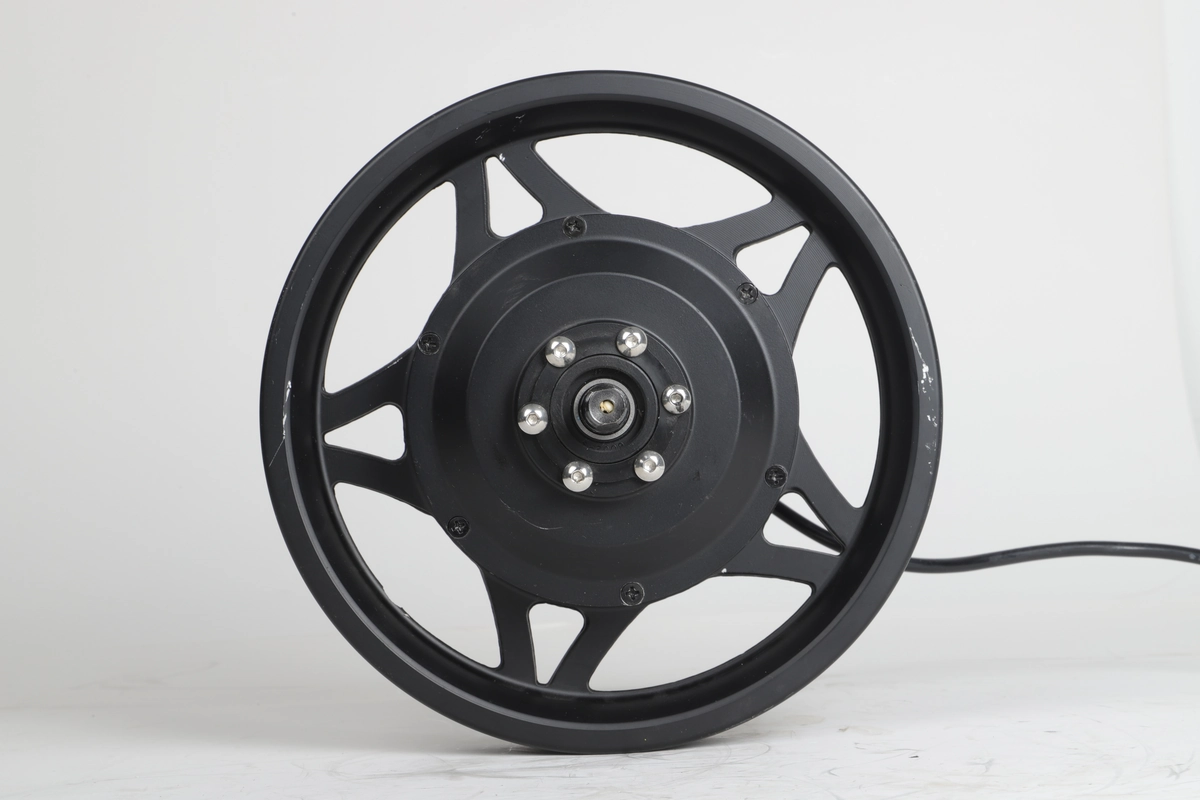Hub motor drive technology represents an important development direction for the drive system of new energy vehicles. This article introduces the characteristics of hub motor drive electric vehicles, summarizes the requirements and drive forms of hub motor drive technology, and briefly compares the research status of hub motor drive forms at home and abroad. It puts forward the key issues that need to be addressed in hub motor drive technology, discusses core technologies such as reducing unsprung mass, suppressing vertical vibration effects, and reducing hub motor torque pulsation, and predicts the development trend of hub motor drive technology.

With the increasingly prominent issues of energy shortage and environmental pollution, vigorously developing new energy vehicles that are energy-saving and environmentally friendly has become an inevitable choice for the industrial development of the world today. Pure electric vehicles have rapidly developed in recent years due to their outstanding advantages such as high efficiency, no pollution, and low noise. Hub motor-driven electric vehicles have unique advantages in many aspects, such as simple and compact structure, efficient and energy-saving transmission system, and independently controllable driving and braking torque, making it an important direction for industry development.
Considering the factors of electric vehicles themselves and combining with the characteristics of hub motor drive, the technical requirements for hub motors mainly include:
DC motors, induction motors, permanent magnet synchronous motors, and switched reluctance motors have been widely used in the drive systems of electric vehicles. Compared with other drive motors, permanent magnet synchronous motors have the advantages of small size, light weight, fast response, and high efficiency. In addition, in addition to high power density, high torque density, and high efficiency, permanent magnet synchronous motors also have a unique weak magnetic expansion capability, which can meet the requirements of electric vehicles for hub technology, so they are increasingly used in electric vehicle drive systems.
According to the different types of rotor of the drive motor, hub motors are divided into two categories: high-speed internal rotor motors and low-speed external rotor motors.
The maximum speed of the high-speed inner rotor wheel hub motor is 15000r/min. In order to meet the actual wheel speed requirements, it needs to be used in conjunction with a reduction device to achieve the purpose of reducing speed and increasing torque. The inner rotor wheel hub motor does not have high requirements for the motor, but the introduction of the reduction mechanism makes the structure of the wheel hub motor complex and increases the non-sprung mass of the car. In addition, the reduction mechanism wears out quickly, which can easily shorten the service life of the wheel hub motor and make it difficult to maintain.
The low-speed outer rotor hub motor directly drives the wheels without the need for a reduction mechanism. The maximum speed of the outer rotor hub motor is 2000r/min. Compared with the inner rotor hub motor, the outer rotor hub motor has a simple and compact structure, reduced axial dimensions, and further improved transmission efficiency. However, when the vehicle starts or climbs, there is a greater demand for motor torque, which can easily cause damage to the power battery and permanent magnets due to the resulting high current.
Although hub motor drive technology has a series of advantages, the introduction of hub motors has important impacts on the vehicle's dynamic performance and safety performance due to the increase in non-sprung mass, negative effects of vertical vibration, torque pulsation of hub motors, etc. These issues are constraints on the development of hub motor drive technology. Scholars at home and abroad have conducted a lot of research on reducing non-sprung mass, suppressing negative effects of vertical vibration, improving the torque characteristics of hub motors, etc. to address the above issues.
Currently, hub motor drive technology still faces many key technical issues that need to be urgently resolved. However, with the requirements of modern society for travel, it is expected that the future development of hub technology will inevitably move towards a lightweight, integrated, and intelligent era, with a wider range of application prospects.
Leave A Comment